In the world of finance and stocks, there are times when “the stars line up” to create an especially interesting story. Such was the case when the announcement was made in March that Chicago-area Horizon Pharma Inc. was joining forces with privately held Vidara Therapeutics (a company which is listed as being headquartered in Roswell, GA). In and of itself, that doesn’t appear to be a terribly significant story. However, as I dug deeper into the story, I found so many underlying “sub stories” that I became entranced. Perhaps you will become entranced as well.
Here is a brief summary of the “stars” that aligned to make this story worthy of attention:
1) Horizon Pharma Inc. was, until 2013, a small, relatively unknown drug company operating in Deerfield, IL.
a. It began trading publically in July of 2011, on the NASDAQ, under the ticker HZNP.
b. Through the 2013 Fiscal Year (12/31/13), HZNP had not yet turned a profit, and boasted a record of only modest (but growing) revenue. Here is the revenue report through September 30, 2013 (three quarters)[1]:
We can see that revenue grew through the 2013 3Q to $34.6 million, compared with the comparable figure from 2012 of just $4.2 million.

c. As revenues have grown, losses have shrunk… from ($2.03/share) through three quarters in 2012 to just ($0.73/share) through the 2013 3Q! (See below)
d. Commensurate with its financials and its “story”, through its first 27 months of trading, HZNP’s stock chart (see below) was uninspiring… closing on 9/30/13 at $3.35 after having reached $9 previously:
2) The HZNP “Story” took off in November of 2013, when it purchased a drug (VIMOVO) with over $20 million in annual sales that is entirely complimentary to HZNP’s biggest existing drug[2]. The purchase was made through a one-time payment of $35 million to Aztra Zeneca (AZT). That purchase was a huge rocket boost to prospective company revenue!
a. I need to highlight why Vomovo was a sure-fire accretive investment by HZNP. You can see below that the existing HZNP product (Deuxis) and Vomovo provide health care providers (HCP) with optimal alternatives for implementing a regimen of pain relief with stomach protection… one through Ibuprofen and the other through Naproxen. Because these drugs address parallel medical conditions, this purchase leverages the existing HZNP sales force within the medical market! The chart of “Underlying Market Potential” (at the left in the slide below) is suggestive of possible sales growth, as long as one accepts that such growth will never come close to dominating their respective markets!
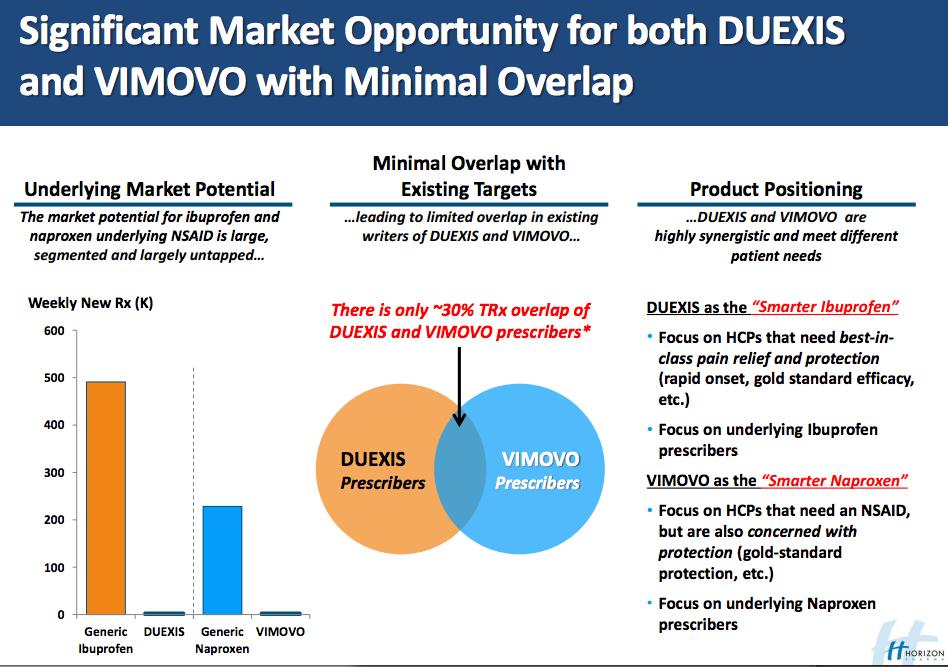 b. To no one’s surprise, the stock price zoomed upward:
b. To no one’s surprise, the stock price zoomed upward:
3) However, a huge problem loomed ahead for the now growing HZNP: they were headed toward PROFIT…!!!!
a. You might be thinking: “But Petty, you idiot, ‘profit’ is the very goal toward which companies strive! That is a good thing… not a problem!”
b. Point well taken, my friend! However, HZNP would be taxed within the increasingly confiscatory U.S. tax system. Since corporate management is charged with optimizing company profits, it had to ask: “Can we improve our financial situation with respect to taxation?”
c. The answer was (of course), a very resounding: “Yes we can!!”
d. In this regard, HZNP is not “blazing any new trails.” Instead, it is wisely following the example of other (former) U.S. drug companies such as Actavis (ACT), Perrigo (PRGO) and Jazz Pharaceuticals (JAZZ)!
e. Each of those companies migrated to Ireland, which has utilized free market economics to foster the growth within Ireland of numerous medical-related companies that call Ireland “home”.
f. HZNP CEO, Tim Walbert, put some specific metrics to the benefit that will accrue to the company after migrating to Ireland: it is projected that the company’s tax rate will fall into the mid to low 20% range… rather than pinch profits at the high 30% range expected within the United States!
4) But that isn’t anywhere near the end of the story! The most intriguing part of this story is HOW management managed the “transplantation” of Horizon to Ireland.
a. HZNP will merge with privately held Vidara Therapeutics. The merger is a bit unusual in that it will involve the creation of a new company – Horizon Pharma PLC! Vidara shareholders will receive 26% ownership of the new company (and $200 million in cash) while current HZNP shareholders will control 74% of the new company!
b. Those of you who have photographic memory will undoubtedly recall that I identified Vidara upfront as a company based in Georgia! So you very gifted folks are now scratching your head wondering how this deal gets HZNP a corporate domicile in Ireland!
c. That is a part of this story that illuminates a fascinating dimension of human nature!
i. News reports printed in the Atlanta Journal Constitution emphasize that Vidara is a Georgia-based company!!
ii. The Vidara Therapeutics website[3], however, lists two headquarters – one in Roswell and the “research” arm in Dublin.[4]
5) The unusual nature of this merger is another “wrinkle” in the story… This merger is a variation upon the “Reverse Merger” corporate finance strategy… one most often used by a privately held company to become a public company by purchasing control of an existing public company. Such a merger greatly expands the financial flexibility of the (formerly) private company moving forward, grants it access to cheaper capital investment (compared with capital access as a private company) and does so more cheaply than, more quickly than, and with less outside interference than other alternatives (such as an IPO). The unusual aspect of this particular “reverse mortgage” between HZNP and Vidara is that the public company (HZNP) took the lead, and remains the dominant party in the new entity.
a. “Reverse Mergers” are not always a good investment. Just a few years ago, the Chinese market was rife with “reverse merger” stories – especially within the coal-mining sector. I believed a couple of the Chinese “story stocks” within that “reverse merger” space and lost my shirt. However, as is true with most Chinese investments – China is a “special case”. The government was a dominant decision-maker within those coal mining reverse mergers, and (as is almost universally true) was not always a “reliable partner”.
b. Within the U.S., reverse mergers have often played a helpful role within corporate finance. If you want to learn more, including some examples of past reverse mergers, seek out either of the links below.[5]
c. According to CEO Tim Walbert (in a recent interview) this sweeping deal between Horizon and Vidara can be described in terms of points such as these:
The deal is “transformative” because it will provide a significant tax benefit that “sets us up to be more effective in acquiring more products”.
“We’re at any point in time looking at several different transactions.”
“Much lower and more efficient tax rates give us a platform for additional transactions that would be more accretive and valuable to the company.”
d. According to the company’s financial projections, right off the bat this deal should bring total 2014 revenue to a range between $250 and $265 million. Earnings before interest, taxes, depreciation, and amortization (EBITDA) can be expected to come in at $65 to $75 million! [Hello lower tax rates!]
6) An additional point of interest within this story is how HZNP management is slowly building a focused drug company — acquisition by acquisition, instead of internally (organically).
a. As a reminder, HZNP is a commercial stage, specialty pharmaceutical company marketing drugs[6] that target therapeutic needs within the arthritis, pain and inflammatory disease treatment spheres.
b. The Company's strategy is to aggregate drug therapies that are sought by the same subset of physicians (primary care physicians, orthopedic surgeons and rheumatologists) who are currently within the sales network of the existing marketing force.
c. In that vein, Vidara’s primary contribution to the new Irish company will be the bioengineered protein (Actimmune) used within the treatment of chronic granulomatous disease[7] as well as a malignant osteopetrosis[8].
d. During the past year, that single drug generated sales of almost $60 million.
e. If you get the impression that none of these drugs hold the overwhelming sales potential demonstrated by such well-known drugs as Prozac, Abilify, Nexium, Humira, Crestor, Cymbalta, Cialis, etc…. you are completely on target! That said, the potential growth of the product line to be marketed by the “new” Horizon can be eye-popping.
For example, according to EvaluatePharma’s World Preview 2013, Outlook to 2018, anti-rheumatic drugs compose the second largest area in terms of sales. Currently, worldwide annual revenues exceed $41 billion, with over 73 million NSAID prescriptions issued each year!
In specific, Deuxis generated revenues that doubled during each quarter in 2013. However, Deuxis is an admittedly costly treatment[9] – delivering exceptional results for patients needing its special combination of a great anti-inflammation drug and protection against gastric ulcers and stomach discomfort. Therefore, the currently steep trajectory of sales growth will inevitably (and soon) slow down.
f. My personal opinion[10] is that, in the long run, the Rayos product (sold as Lodotra in Europe, Asia, Africa, etc.) may hold the greatest potential. It is utilized in the treatment of rheumatoid arthritis, polymyalgia rheumatics, asthma, and chronic and obstructive pulmonary diseases (as well as a variety of other conditions). The “edge” held by Rayos in the marketplace is that it offers prednisone with a four hour lag time… which provides patients with an immediate release formulation. In particular, the CAPRA-1 and CAPRA-2 trial results demonstrated a significant reduction in symptoms of “morning stiffness” if a patient ingested the drug around 10 PM.
7) If you are a faithful reader, you should not be surprised that Ireland has successfully nurtured an international reputation as a Pharmaceutical and Medical Industry powerhouse! In particular, our article concerning the fall (2013) “rebalancing” within the Market Vectors Wide Moat Index ETF (MOAT) disclosed that 5% of the fund was invested in Covidien PLC (COV) – a $33 billion market cap healthcare behemoth based in Ireland!
a. Ireland began this effort in the 1960’s.
b. Since that time, foreign direct investment within Ireland into the areas of Pharmaceuticals, Biotechnology, Medical Devices and Diagnostics has been eye-popping. Nine of the top ten global pharmaceutical companies are located in Ireland… seven out of ten pharmaceutical “blockbusters” are produced in Ireland… and over 45,000 persons are employed within these industries.
c. In particular, the area of “Medical Devices and Diagnostics” has been growing…
i. This area is sometimes referred to as the ICT Sector (“Information and Communications Tech” Sector).
ii. Ireland has one of the highest concentrations of ICT activity and employment in the OECD (Organization for Economic Cooperation and Development).
iii. Just last November, an international conference highlighted Ireland’s unique potential as a center for the development of world-class digital health solutions.
iv. An insight unlikely to occur to you or I jumped out at me when I read this statement from a Chartered Engineer in Ireland, John O’Dea[11]:
“As an engineer working in this sector, one can potentially affect the lives of many more patients than one could ever hope to encounter as a physician in medical practice.”
8) Finally, the last part of this story that captured my attention was VOLATILITY.
a. Anyone who (like me) has hung onto shares of one or more biotech companies during this past month knows the agony of falling prices (represented below in IBB – a popular Biotech ETF)!
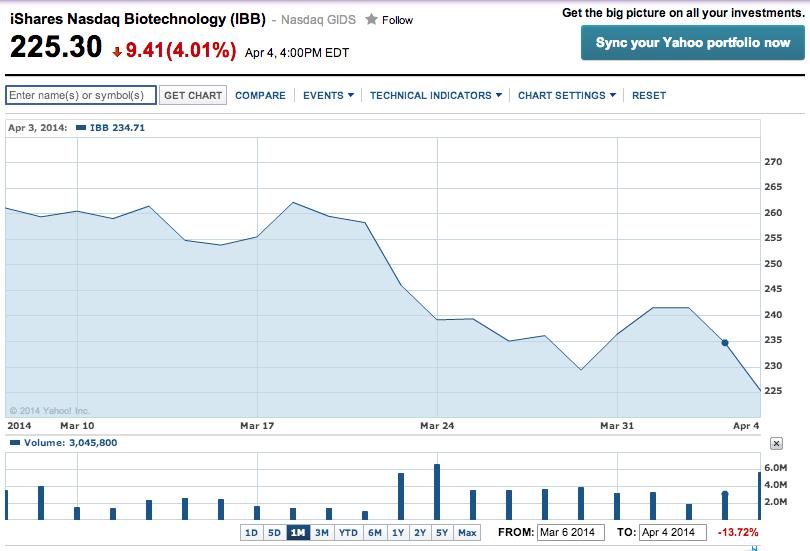
b. For better or worse, my “benchmark” for volatility has become Tesla (TSLA), Solar City (SCTY), and First Solar (FSLR). In the graph below, I compare the price action of HZNP (in blue) with that of the above ulcer-producing stocks. The period graphed extends from 9/30/13 through March of this year. As you can see below, at least since the end of 2013, HZNP has made TSLA, SCTY, and FSLR look as though they have been treading water!
Therefore, as you remember the above graph… keep in mind the following very important warning: HZNP is not for the faint of heart… “Be Careful Out There!”
INVESTOR TAKEAWAY: No matter how you feel about Horizon Pharmaceutical Inc. (HZNP) as a potential investment, I do hope that you found value within the above review of the many (and varied) intriguing dimensions of this story about a small, start-up company based in Deerfield, Illinois … with aspirations that seem to stretch far beyond “the horizon.”
Our story touched upon such items as:
1) The uncertainty and volatility inherent with start-ups;
2) The rather unique way in which HZNP management is slowly building a significant drug company piece by piece through targeted acquisitions (starting with Vomovo);
3) The creative manner in which management “solved” the looming “problem” of taxable profits – move to Ireland!
4) Within the many news reports regarding the uniting of Horizon with (privately held) Vidara Therapeutics, a reader could become confused regarding the actual origin and nature of Vidara! Georgia-based news reports emphasized Vidara’s roots in Roswell, Georgia. Other stories emphasized the centrality of the merger leading to a corporate headquarters (and tax home) in Ireland.
5) HZNP did not engineer anything resembling a standard, “vanilla” merger with Vidara. Instead, it took the concept of “Reverse Merger”, largely stood it on its head, and adapted that strategy to meet its strategic needs! Someone within HZNP management is clearly skilled in “thinking outside of the box”;
6) The merger with Vidara built upon the company’s existing strategy of creating a company of growing stature by acquiring one piece at a time. In this instance, Actimmune was an even more significant addition to the total product line of the combined company than Vivomo had been earlier (in September).
7) HZNP’s choice of Ireland as its home is an excellent example of the growing prevalence of a “global economy” that now pays more attention to economic advantages and incentives than to sentimental patriotism. The difference between a tax rate in the upper 30% range and one in the lower 20% range is a factor of almost two – an extremely compelling corporate incentive!
8) Finally, we saw just how Volatile a drug company such as HZNP can be.
If I was foolish enough to recommend any action with regard to HZNP[12], I might suggest that intrigued investors should occasionally take a look at the progressing story (and price chart) of Horizon Pharmaceutical PLC.
Since the end of last year, HZNP peaked at $17.35 (on a closing basis) and has now settled back toward $14 ($14.13 on April 4th). I would feel most confident if I could buy it between $9 and $10/share; however, that may never become possible. Within these parameters (that acknowledge the reality that the stock price has moved too far too fast), I might consider legging into the security over time, based upon the sales growth potential and what appears to be insightful management.
DISCLOSURE: The author does not currently own HZNP. Nothing in this article is intended as a recommendation to buy or sell anything. Always consult with your financial advisor regarding changes in your portfolio – either subtractions or additions.
Submitted by Thomas Petty MBA CFP
[1] The HZNP Fiscal Year ends on December 31st.
[2] Deuxis is by far HZNP’s dominant drug by sales – accounting for 77% of sales in the most recent quarter.
[3] http://www.vidararx.com/
[4] Vidara Therapeutics Research Limited
Adelaide Chambers
Peter Street, Dublin 8
Ireland
Direct: 353 (0) 1 449 3250 |
[5] http://www.investopedia.com/articles/stocks/08/reverse-merger.asp
http://en.wikipedia.org/wiki/Reverse_takeover
[6] Duexis(R), Vimovo(R) and Rayos(R)/Lodotra (R) are marketed to orthopedic surgeons and rheumatologists … targeting Osteoarthritis (OA) and Rheumatoid Arthritis (RA)… requiring a combination of pain relief and anti-inflammatory drugs in treatment.
[7] An immune disorder.
[8] A rare congenital disorder… which leads to the patient’s bones becoming overly dense.
[9] Monthly treatment can run as high as $700-800/month
[10] Disclosure: I am not a physician and not a medical expert or drug analyst. However, I have needed anti-inflammatory drugs for over half my life.
[11] He is also the Chair of the Irish Medical Devices Association.
[12] I make it a policy to never be so foolish!
Related Posts
Also on Market Tamer…
Follow Us on Facebook

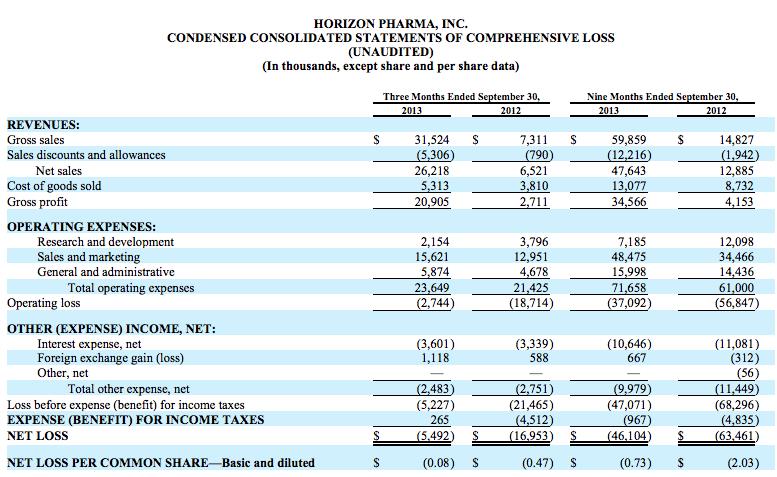
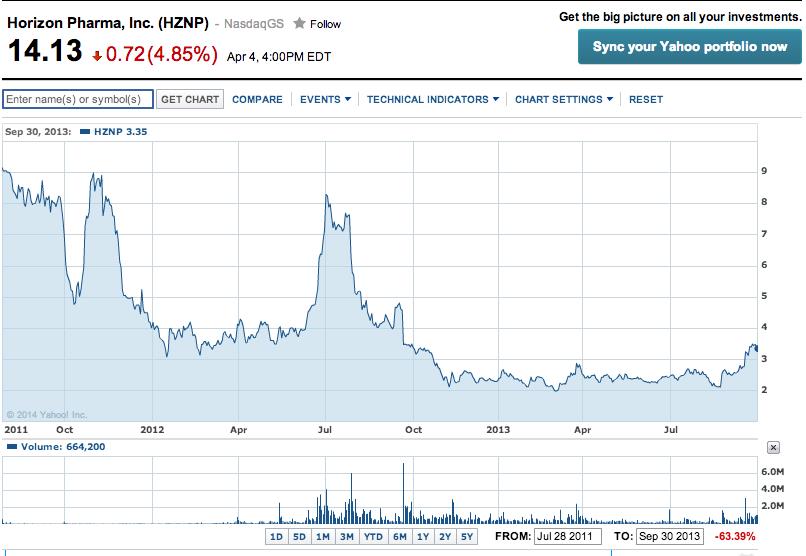
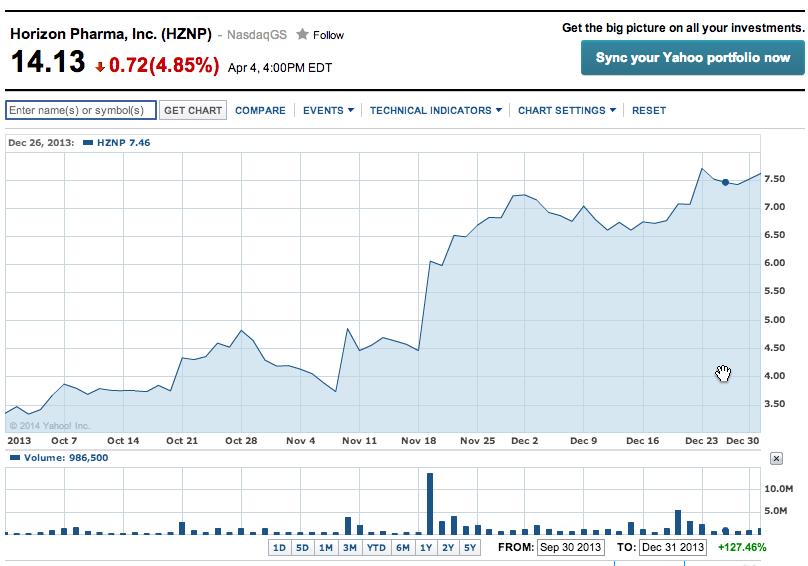
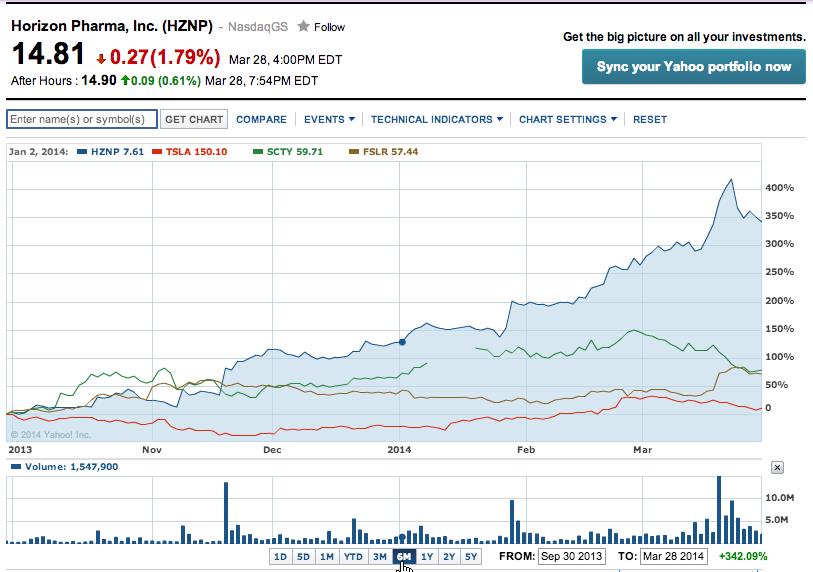
 We're About to Find Out the Answer to Warren Buffett's Pointed Question About Trump's Tariffs. Here Are 3 Stocks to Buy Depending on What That Answer Is.
We're About to Find Out the Answer to Warren Buffett's Pointed Question About Trump's Tariffs. Here Are 3 Stocks to Buy Depending on What That Answer Is.

